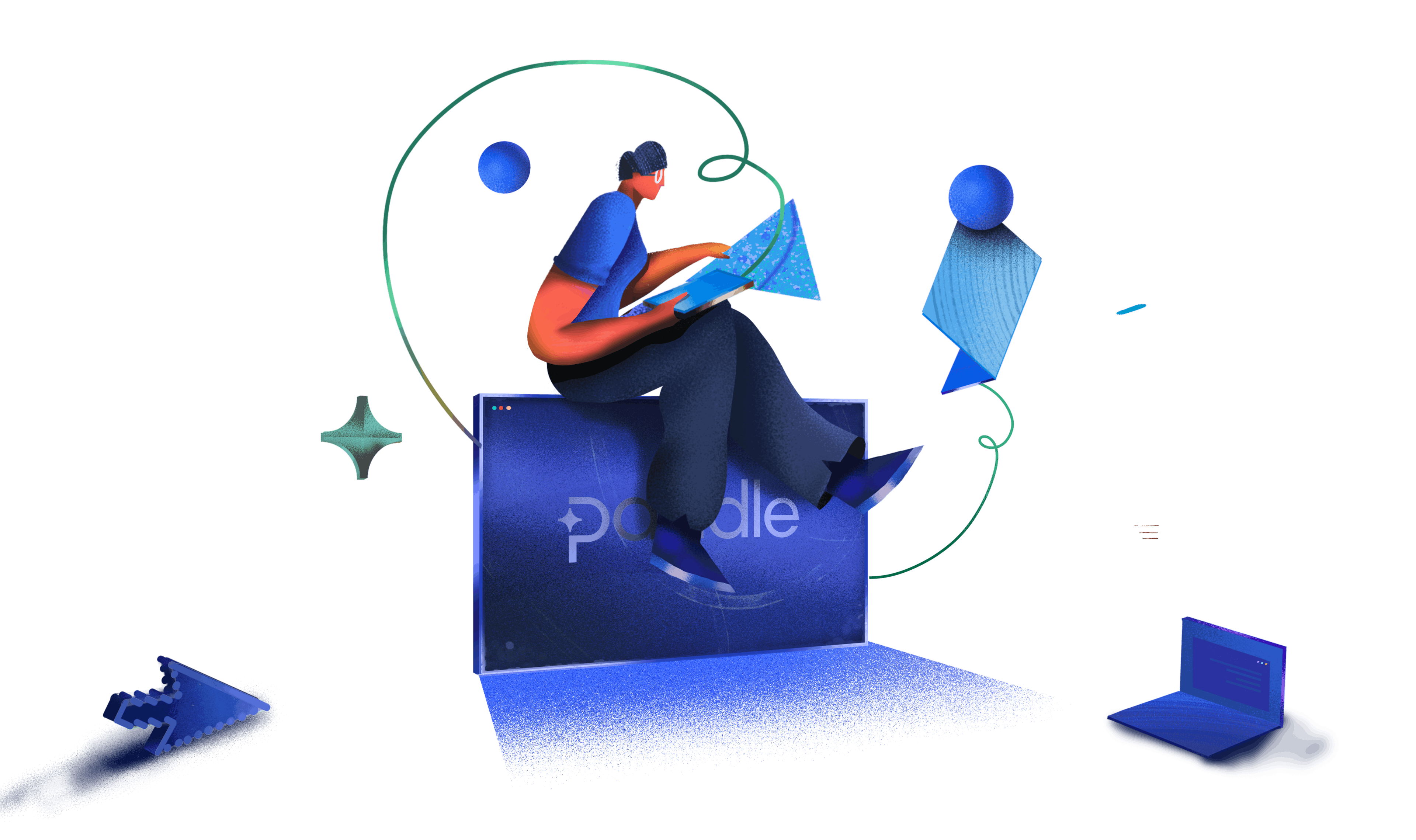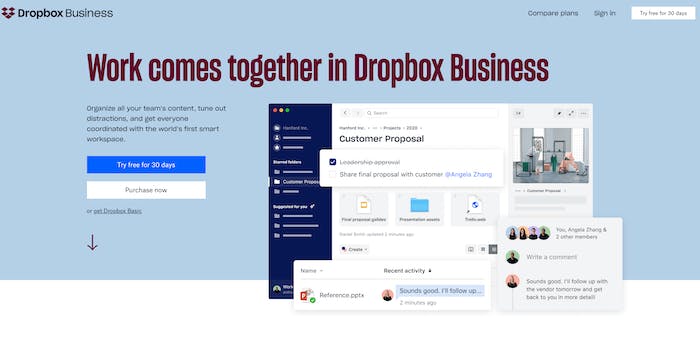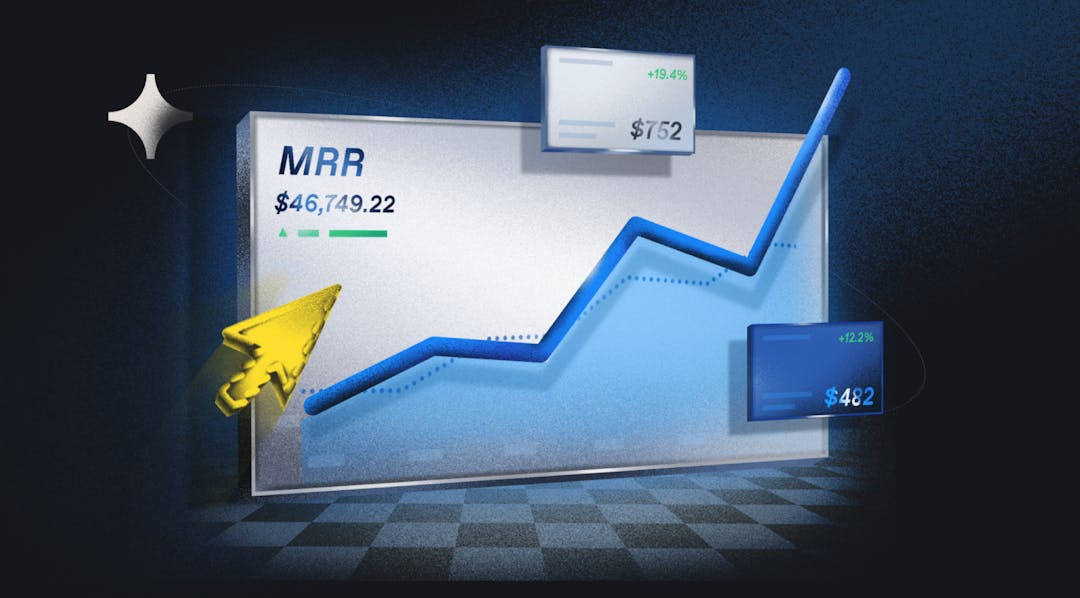Product-led growth is a fantastic strategy for any aspiring SaaS or subscription company, but many modern companies fail to see its true importance. Read on to learn all about it.
How people buy and use software is drastically changing. Consumers are more eager to try a product than to converse with a salesperson—paving the way for a product-led growth approach. Letting your product lead means companies must reconfigure their marketing, sales, and service strategies to meet consumer demands.
Since the future is product-led, let's walk through what product-led growth means, the main principles of it, and some great examples.

What is product-led growth?
Product-led growth is a strategy that uses product value as the chief driver of customer acquisition, business growth, and expansion in a market. The core requirements of product-led growth: a product users can easily adopt and can't live without. The traditional approach to SaaS growth involves building a product, then hiring a sales team to sell it. Product-led growth is a bottom-up approach in which your company enables people to discover and adopt your product independently. It allows people to try before they buy.
The 4 main principles behind product-led growth
There are some principles to consider behind product-led growth: leveraging product need, using that need to expand, and using your product to retain and acquire customers.
1. Leverage your product need
Building an original product isn’t easy, but once you’ve built something that satisfies the needs of entire markets, you know you’re on the right track. Take Dropbox for example. It developed a product people desperately needed—easy file sharing. Dropbox used the need for its software as leverage in its growth strategy. I’ll unpack Dropbox’s product-led growth success later in this post.
2. Use your product to expand
If customers love your product, upselling and cross-selling become easy. Upselling and cross-selling are the primary drivers of expansion revenue. You can upsell customers by upgrading them to a larger plan, and you can cross-sell customers additional features to augment the service they already have. You can leverage your product value to build revenue beyond the primary product.
3. Keep retention high through product satisfaction
The key to product-led growth is keeping retention as high as possible, and churn as low as possible. You do this by simplifying onboarding to ensure customer success and making your product indispensable in a customer’s daily life.
4. Acquire new customers through strong referrals
Acquiring new customers is easier when they learn about you through word of mouth. Take G Suite for example. Google doesn’t employ an “in your face” referral approach—it’s subtle. You can send anyone a Google Doc. Non-Google users don’t have to join Google to view the document, but it would make idea-sharing much easier. Consequently, obtaining it makes it and easy and logical choice. Google’s product is easy to use and share; once one person sends a link, the product spreads like fire. Today, universities, organizations, and individuals rely on G Suite products for daily tasks.
The key to your growth? An awesome product
You can’t grow unless you’ve built a product that shows real value. If your product can easily be replaced by 10 other competitors, you haven’t truly leveraged the needs of your customers. Before you start thinking of go-to-market strategy, you need to create a product that your customers cannot do without. Having a solid product will inspire growth through multiple channels. Building a solid product means understanding what your customer truly values and tailoring it to their demands.
Acquisition models to ignite your product-led growth
There are two acquisition models that go hand-in-hand with product-led growth: the free trial model, and the freemium model. The difference between freemium and a free trial model is time. Under a freemium model, the customer can use the free features forever. A free trial is only free for a set period of time.
Free trial model
The free trial model is extremely popular, but not always as effective as the freemium model. The free trial model gives customers a short demo period, ranging from one to two weeks, or even a whole month. Once the demo runs, if the user experience is positive enough, users will hopefully turn into paying customers of your full-scaled product. Some companies even require inputting credit card information at the beginning of the trial and will automatically start charging once the trial ends—requiring some diligence from the customer.
Freemium
Freemium is a fantastic acquisition model (not a revenue model) and can get customers started using a product that is 75% of your full product. Customers over time use the freemium option so much that they opt for the full product. To drive retention, we recommend freemium over a free trial. Freemium is something we’ve researched quite a bit. For a deeper look into freemium, download The Freemium Manifesto, which addresses some pitfalls, but shows how ultimately, freemium will bring customers into your subscription ecosystem.
Measuring your growth through analytics
Whatever your business model, you have to measure growth to know if your product is gaining traction or not. There are a wide range of analytics you can track, but I’ll unpack the top four for product-led businesses.
Revenue
Revenue is an easily traceable number that will tell you what you need to know, like whether you made more or less than last year. You can track revenue monthly—monthly recurring revenue (MRR), or you can track it annually—annual recurring revenue (ARR), which is simply you MRR times 12.
Churn rate
Churn rate is the percentage of customers who leave your service over a given period of time divided by the total remaining customers. Your churn rate should gradually be going down as you acquire more customers through product-led growth efforts. Tracking churn rate is vital because it’s a direct reflection of the value of your product and features that you’re offering customers.
Usage
Companies that have high usage rates have leveraged their product’s value to get the most of their customers. This simple statistic can show how much customers are in need of your product. To maximize revenue from usage, use a value metric. By doing this, you can scale the price of the product directly with how much value the user is getting from the product.
Referral rates
Is your company getting tons of new users through referrals? This indicates you’re providing real value. Incentivizing customers to refer other customers is a great way to get more users. Uber, Dropbox, and PayPal are some examples of this.
A PLG success story
So many companies are employing a product-led growth strategy—Slack, Salesforce, Spotify, etc. Each company has a unique success story, but as promised, let's break down Dropbox’s product-led growth journey.
Dropbox
Dropbox is a great example of product-led growth because the product has lent itself well for sharing and acquiring more users. Dropbox has reached $1 billion in revenue in less than 10 years. Its product-led growth strategy is straightforward and certainly effective.
OpenView looked at how Dropbox’s product-led strategy delivered a one-two punch. First, Dropbox developed a simple, usable product meeting market demand. It quickly became the best tool for file sharing. Second, it introduced features designed to take advantage of the viral factor. Users earn more storage credit by sharing a referral link. This referral tactic helped Dropbox gain new users while enhancing the customer experience for existing users. Shared links are user-friendly because people can share files without the recipient needing a Dropbox account.

Advice from an expert
Product-led growth is something our team has talked about extensively, specifically on Recur Now. In one episode, our team spoke with Despina Exadaktylou, Founder of Reinvent Growth and author of The State of Product-Led Experience: Insights & Data Derived from the Practices of 40+ Product-Led Organizations. She’s an expert in product-led growth as her agency is focused on helping SaaS companies implement and scale a product-led go-to-market plan.
Exadaktylou’s advice for product marketers:
Not to be afraid of the transition because eventually the products that are going to survive are those that capitalize on their own superpowers. And trying—even though the transition to a product-led go-to-market model may not be something done overnight—try to capitalize as much as possible on product experience, which is also a very new concept. And see how they can shift the mindset of the end user and the buyer toward a more modern way of buying and trying a SaaS product.
Compete with product-led growth
We live in an age of incredible competition. It’s become remarkably easy to start a subscription company and build a product. With that, customer acquisition cost is higher than it’s ever been, and the number of competitors are increasingly high. Having a product that drives its own growth will significantly reduce CAC and the amount of sales resources you need to grow. Implementing a product-led growth strategy is the smart way to go for any aspiring SaaS or subscription company.




